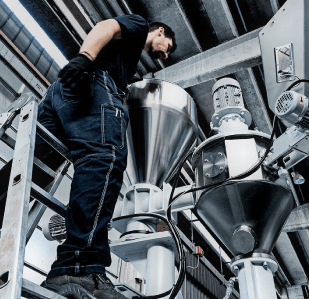Brief summary
Known for its toughness and versatility, HDPE is widely used in transporting oil, gas, water, and sewage. This article aims to answer the most frequently asked questions about HDPE piping systems, highlighting why this material is so interesting and extensively utilized. From its durability and corrosion resistance to its recyclability and ease of handling, HDPE pipes offer numerous advantages for various applications.
Exploring the Growing HDPE Pipe Market
HDPE Pipe Market will grow at a 5% compound annual growth rate during the forecast period 2020-2026. HDPE pipes are made of polyethylene resin and is a tough, durable material with unique performance properties that allow for its use in a broad range of applications like for transport of oil, gas, water, sewage or for Agriculture & Irrigation. For example, the developing countries are aggressively working on the development of their sewage system, thus the demand of HDPE pipes has also increased. Also, companies from oil & gas industry are trying to adopt the HDPE pipes as an alternative of steel pipes for the inferior cost and high tensile strength and easy handling.
These are not the only advantages of HDPE. For example it is resistant to corrosion, deposits, and tuberculation. HDPE is easy to transport, it is durable but also recyclable. HDPE pipes are flexible thanks to the many joining options, so it is not needed to use flames for joining the pipes. The material used for pipes is critical for the success of the project and HDPE is the right material for that!
The purpose of this technical note is to provide answers to commonly asked questions about use of HDPE (high density polyethylene) piping systems for water applications.
What is the life expectancy of HDPE pipe in water applications?
Many installations of HDPE pipe in water applications are already reaching 50 years of successful service. The polyethylene pipe industry estimates a service life for HDPE pipe to conservatively be 50-100 years. This relates to savings in replacement costs for generations to come.
Will HDPE pipe float in water?
Yes, HDPE pipe, due to its density being slightly less than water, will float even when full of water. When it is desired to ensure flotation of the line, various forms of collars, saddles, and strap-on flotation devices are available. For underwater anchored pipeline installations, it is important to specify the proper weights and spacing of the weights. Screw-anchors are a practical alternative. Whenever possible, an underwater pipeline should be installed in a trench with protective crushed rock cover.
How does the impact strength of HDPE compare with other pipes?
HDPE is a ductile material and has exceptional impact strength. HDPE’s superior impact strength provides a piping system that is near impervious to impact damage and to damage from improper tapping. In the real world, engineers understand that pipes must be tough and resist impact and handling damage. HDPE pipes are field tested and proven to be impact tough.
How is HDPE pipe connected and joined to PVC pipe?
Methods of joining HDPE pipe to PVC pipe vary with the size and style of PVC. Common methods include slip-joint anchor fittings, gasketed joint adapters, and flange connections. HDPE to PVC transition fittings are also available from certain fittings manufacturers; also, refer to PPI TN-36, General Guidelines for Connecting HDPE Potable Water Pressure Pipes to DI and PVC Piping Systems, for additional information.
How can HDPE pipe be connected to other pipe products such as ductile iron pipe or valves?
For pressure applications, HDPE transition fittings, HDPE mechanical-joint adapters, gasketjoint adaptors, HDPE flanges, and standard metal couplings with internal stiffeners are recommended. The most common method is to use an HDPE MJ (mechanical joint) adapter to connect the HDPE pipe end in a DI MJ bell using the bolt and gland kit supplied by the HDPE MJ manufacturer.
DIPS sized HDPE pipe may be inserted directly into an MJ bell with a restraint ring and insert stiffener for the HDPE pipe. When joining HDPE pipe to a DI pipeline either the DI joints must be restrained or the transition connection must be anchored.



_-_Post_di_Facebook_-_Dimensioni_personalizzate_(1)_60cafdf20856f.png)


